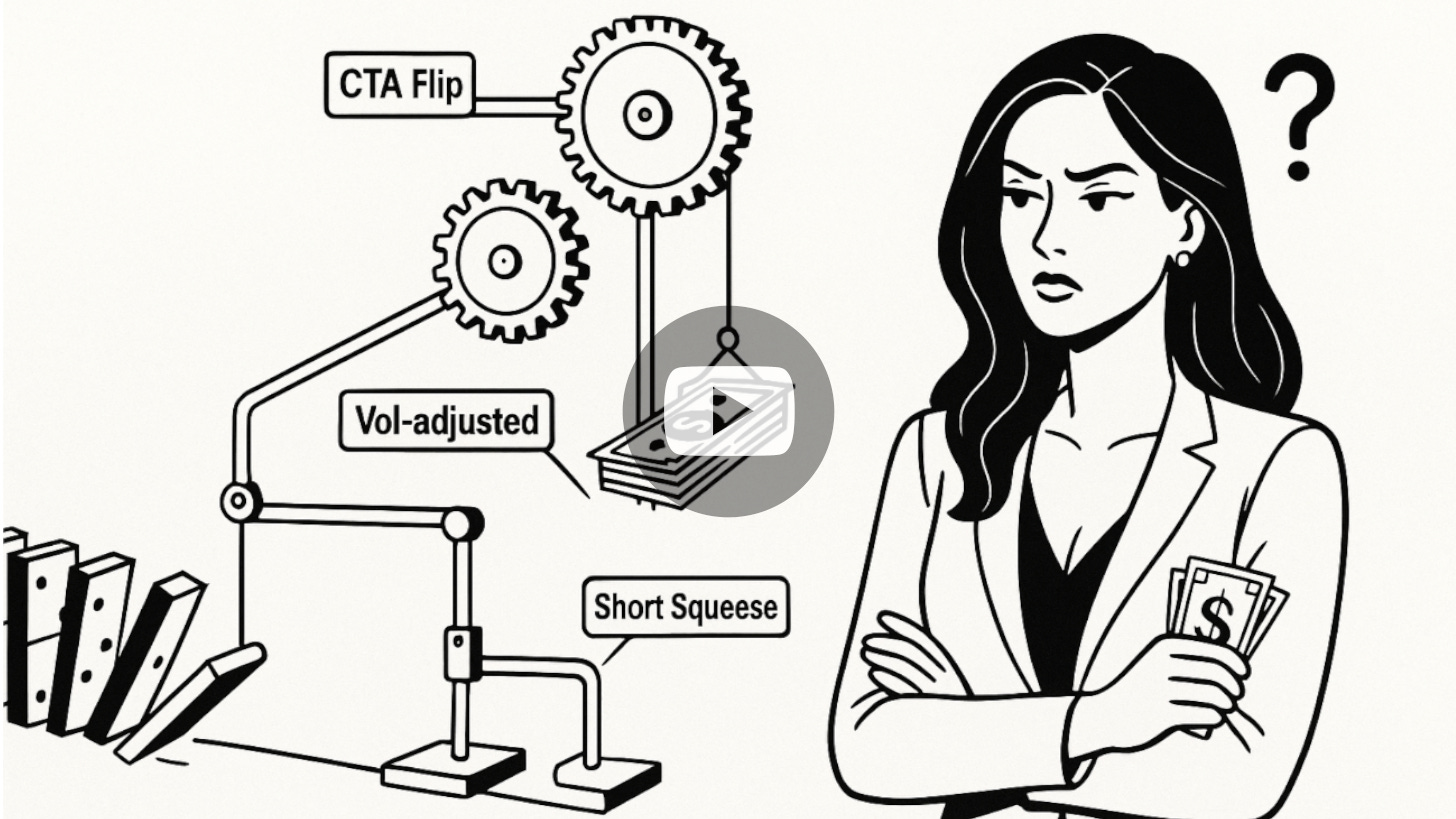A decade ago, short squeezes were edge cases — rogue trades or retail revenge fantasies. Today, they’re structural chain reactions dressed up in quant logic.
While financial media obsesses over unsustainable rallies in bad companies, the more interesting question is how so many institutional players ended up trapped on the wrong side of the same trade. Too many funds shorting the same tickers, using the same risk frameworks, chasing the same backward-looking signals — and now caught in reflexive feedback loops they helped build.
These squeezes could be about conviction or valuation, but they’re most definitely about triggers. CTAs flip long as momentum breaches thresholds. Vol-adjusted models chase strength. Short books scramble to reduce exposure before someone else gets torched. From ignored small caps to wounded tech names, the market’s most shorted stocks have become unhedgeable — too fast, too crowded, too reflexive.
And while the dumb money label still gets thrown around, the more painful irony is that some of the smartest desks in the room are getting run over by their own systems. Algos designed to exploit herd behavior have become the herd.
Below, as always, the minimum you need to know to get a feel for what’s cooking:
Fiscal-Fueled Risk Appetite
Despite all the chatter about recession, fresh data shows that market participants remain surprisingly hungry for risk. Part of this stems from ongoing liquidity measures: the Fed’s balance sheet has contracted, but large fiscal deficits are quietly pumping cash into the system. That extra capital is fueling short-covering, especially in smaller and more volatile names.
Germany’s Reform Letdown
Hopes ran high for deep economic reform under Chancellor Merz, but the bold chainsaw approach looks more like a timid haircut. His fiscal package relies on a patchwork of special funds rather than structural changes. This might keep short-term markets propped up but pushes genuine budget problems into the future.
China’s Trade Routes
Official data shows Chinese exports to the U.S. are slumping. Reality? China is rerouting goods through alternate geographies to bypass tariffs. This keeps the global supply chain humming but distorts standard data. U.S. businesses that rely on cheap imports are quietly paying the same Chinese factories — they’re just writing checks to Vietnam or Malaysia.
Share Buybacks vs. Capital Expenditures
U.S. corporations face a dilemma: keep boosting share prices with buybacks or finally invest in real productivity improvements. Supply chain re-shoring, for example, requires heavy CapEx. With bipartisan demands for domestic growth overshadowed by short-term market mania, the winner will be whichever side can maintain investor confidence.
Get Rich Overnight with Options? Yeah Right...
TUESDAY TARGET: The ticker says it all — we should probably run. But when volatility is on our side, we can stick around and hang more often than not.
All our recent trades and the reasoning behind them can be found in the Trade Alerts section. Think of it as a behind-the-scenes look into our process, so you can decide if it’s worth adopting (or adapting) in your own strategy.
Curious about integrating these insights into your own portfolio — or just bouncing ideas around? Book a 30-minute strategy call. I am happy to help hone your edge or strengthen your risk management.
Please note, all content is for educational purposes and isn't personalized for individual portfolios or financial advice. Curious about putting any of these ideas into action? Juri von Randow is here to offer guidance or connect you with the right resources.






